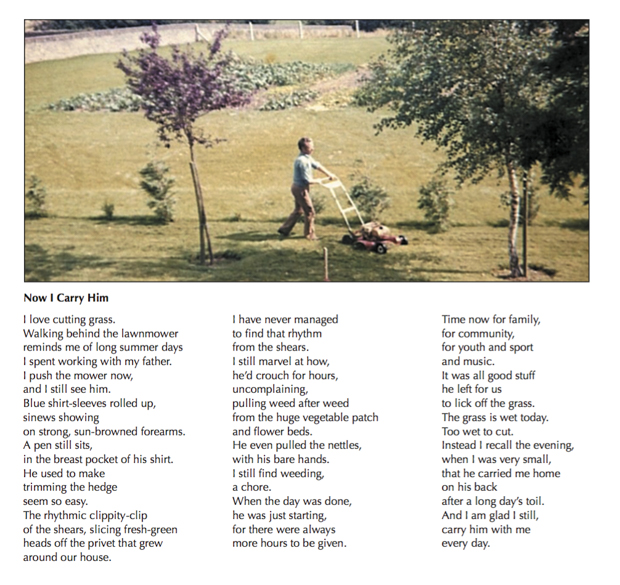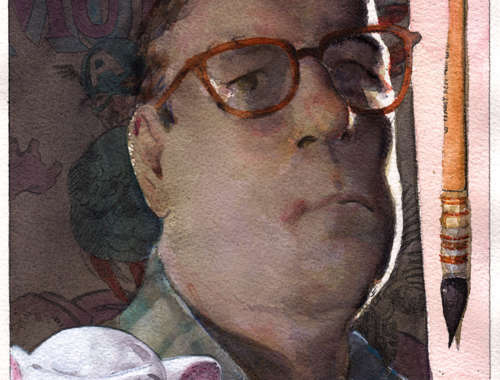Irish history means everything to John W. Hurley.
It starts with his family. His grandfather William Hurley was from a coastal town called Ballyheigue in County Kerry. Young William fought in the British army in World War I, then with the Irish Republican Army in the war of independence, and later on the side of those who were opposed to the 1921 Anglo-Irish Treaty.
That turned out to be the losing side, and so William packed up his family (including then 24-month-old Michael J., John’s dad) and moved to Jersey City.
Like many emigrants, the Hurleys assimilated—but they never forgot where they came from, and they made sure they passed on their Irish pride to their children and grandchildren.
“My dad really valued his heritage and his culture and tried to instill that pride in us,” says the soft-spoken Hurley, a graphic artist from Pipersville, now back in college and hoping to one day teach high school social studies.
Clearly, something must have penetrated, and pretty deeply at that. Although he’s only an amateur historian, John W. Hurley has managed to make himself into a passionate expert in a very obscure yet fascinating subject: the history of shillelagh.
Most people think of this iconic symbol of old Ireland as a walking stick. But Hurley knows what it really is: a weapon.
He started to come by this knowledge early in life, mostly by making some chance connections.
For a start, he recalls hearing his grandmother speak Irish. Like a lot of kids, he paid little attention to what the grown-ups were doing. And then, one day, when he was in high school (Essex Catholic, taught by the Christian Brothers), “it dawned on me that there was an Irish language, separate from the English language. it was an epiphany, and I wondered what else about Irish culture I was missing.”
Around the same time, he and his family went to the Irish festival in Holmdel, N.J., and he found a book of stories by the little-known Irish novelist William Carleton. In one of the stories, there was an account of a “stick fight.”
“I was a kid who watched a lot of kung fu movies,” Hurley says. “In this scene, two guys are fighting, and one guy moves in close and flips the other guy over his shoulder. I thought to myself: This is like kung fu. That made me realize that there was more to stick fighting than barroom brawling.”
Indeed, fighting with the shillelagh proved to be Ireland’s own martial art. Once Hurley made that connection, he became obsessed with the idea. He wanted to know more.
He went on to attend the University of Dayton for a degree in commercial design, and then, in 1975, he went to Ireland to spend time with family. While there, he found a 1975 book, The Irish Faction Fighters of the 19th Century, by Patrick O’Donnell. It provided more detail on stick fighting, and by then it clear to Hurley that that battling with a shillelagh was not just about two hard-headed Irishmen frantically whaling away at each other. There was a formal discipline and an art to stick fighting, passed down from father to son, together with an elaborate set of unspoken rules—shillelagh law—for how a fight must be conducted.
It was Hurley’s father Michael who urged him to follow his passion.
“I was talking to my dad about it (stick fighting) one day,” says Hurley. He was the one who suggested I should write a book about it. I had always wanted him to write. He really was like an old fashion seanchie (the Irish word for story-teller). He was a really good guy with an outgoing personality. The problem was, he didn’t have the patience to sit down and write. But I was a lot more introverted.”
So the more reserved son began a project that would drag on for years, through marriage, kids, jobs, layoffs and all the other joys and challenges of adult life. Right from the start, Hurley knew he had his work cut out for him.
“When I was a kid, I knew what a shillelagh was. Everyone knew what a shillelagh was. It was iconic, like a harp. I also knew that not a lot of people realized it (fighting with a shillelagh) had been a martial art. I knew it would be hard to convince them. So I really wanted to make it a good book, to provide evidence that it was for real.”
Hurley spent countless hours tracking down every bit of documentation he could find, piling up copious notes.
Around 1994, he was reading a kung fu magazine–that interested had never faded away–and he discovered a story about a stick fighter in Canada by the name of Glen Doyle, who had learned the art from his father.
Hurley wrote to him, and for a while they corresponded, but not much came of it.
Then a few years later, Hurley again found information about Doyle, this time on the web–and now Doyle was actively teaching his family’s stick fighting method. At this point, Hurley was a able nail down even more detailed information.
Finally, after years of fact-gathering, Hurley wrote his book, “Shillelagh: The Irish Fighting Stick.” Self-published in 2007, it is Hurley’s densely documented, 370-page homage to a forgotten Irish art. It is dedicated to his father, who, by all accounts, was proud. (Michael Hurley died in November 2010.)
Hurley’s book is not exactly sailing off the shelves, but ultimately, it’s not whether the book becomes a best-seller. It’s that the book exists at all.
“I just thought I always wanted to do something like this, almost in a patriotic way,” he says. I wanted to contribute something to Irish culture somehow. No one else was interested. It seemed the one thing I could do.”



